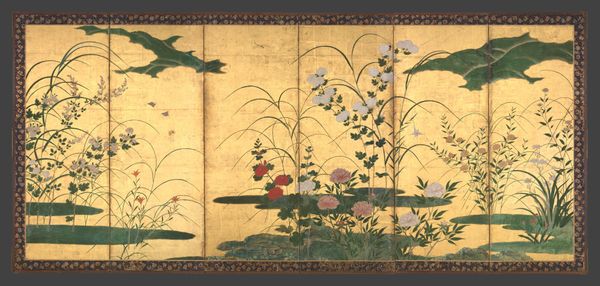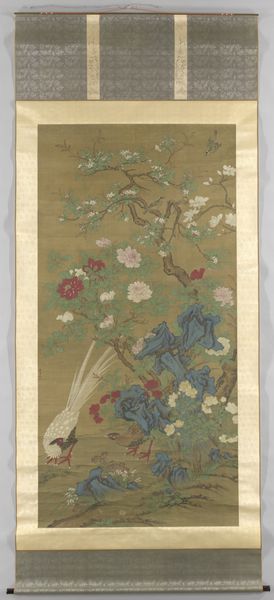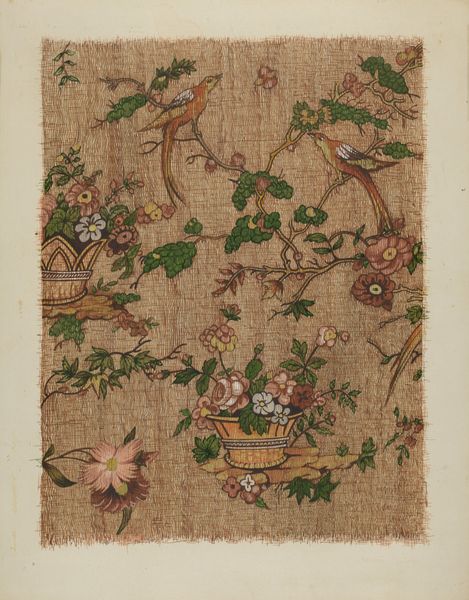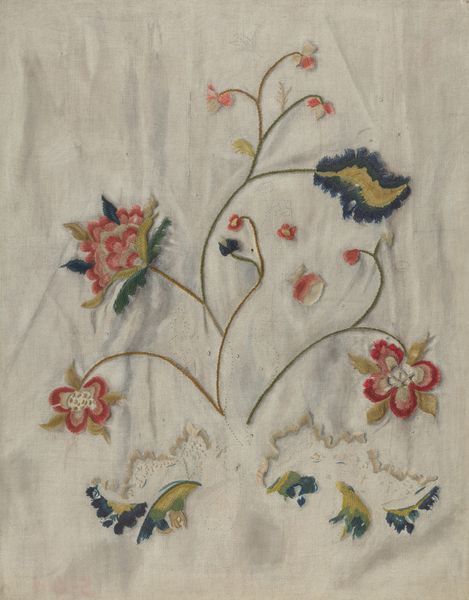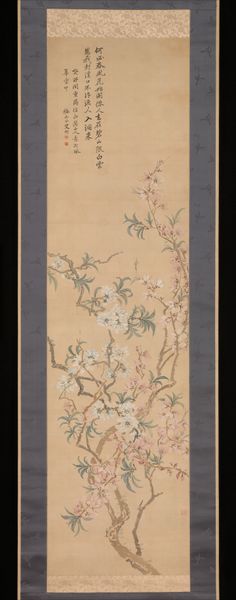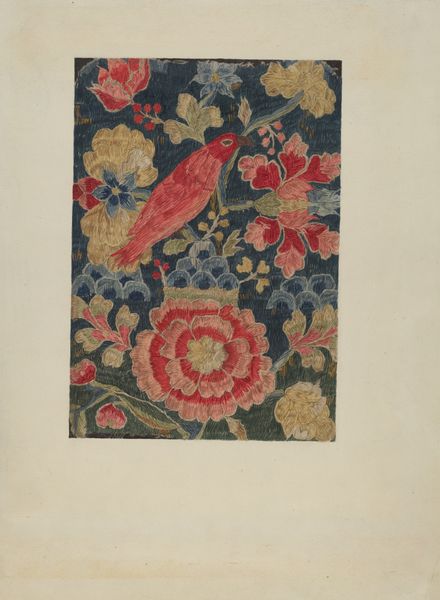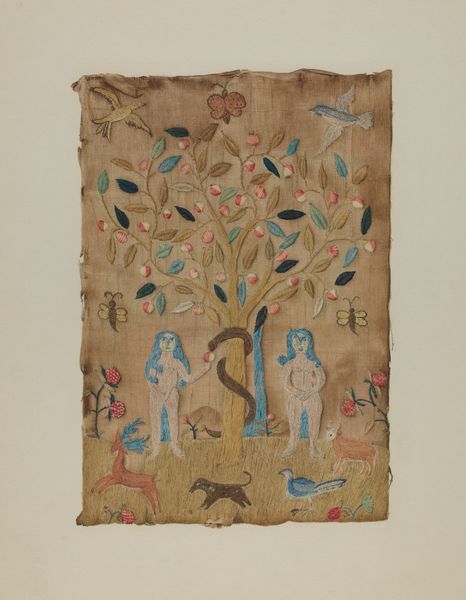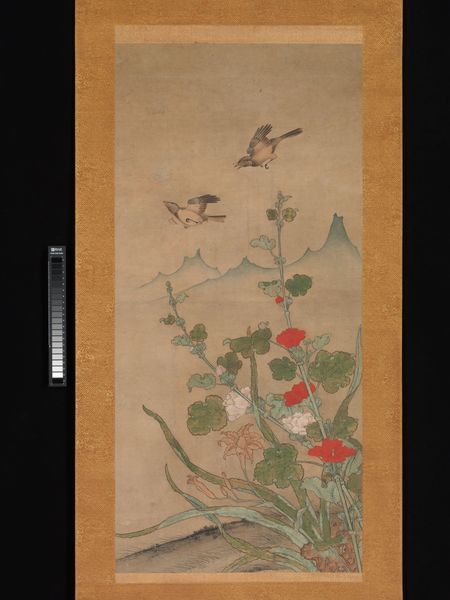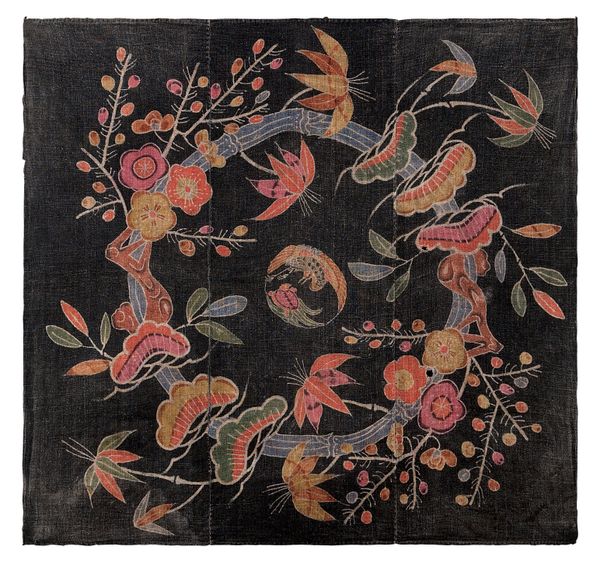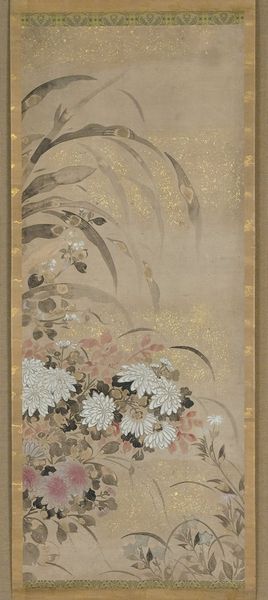
Yellow-ground wrapping cloth (uchikui) with pattern of irises in a flowing stream c. late 19th century
0:00
0:00
weaving, textile
#
asian-art
#
weaving
#
textile
Copyright: Public Domain
This yellow-ground wrapping cloth with a pattern of irises in a flowing stream was created by an anonymous artist. The overall design is strikingly symmetrical, with the same arrangement of irises and water streams mirrored on either side of a central vertical axis. The composition emphasizes verticality, drawing the eye upward from the stylized water motifs at the bottom to the blossoming irises at the top. There is a flattening of perspective, characteristic of traditional Japanese design. The irises and streams are rendered in blocks of color rather than with shading or depth. The artist creates a semiotic interplay between the natural elements and the cultural context in which the cloth was produced. The use of flowing water and irises are not merely decorative, but carry symbolic weight of purity and renewal. The muted yellow background serves not only as a backdrop, but also unifies the composition. This textile prompts us to reconsider how form and function intersect within cultural objects, reminding us that artistic expression is always embedded in larger systems of meaning and practice.
Comments
minneapolisinstituteofart almost 2 years ago
⋮
This wrapping cloth, or uchikui, is made up of two symmetrical panels of heavy-grade, plain-weave ramie. The panels are not identical because an artist created the design by hand using the paste-resist dyeing technique called tsutsugaki: motifs were made by squeezing sticky paste out of a tube, like icing a cake. Until 1879, government sumptuary laws regulated the use of colors and yellow ground, reserving them for the royal family; hence this piece likely postdates that year. The small size of this uchikui suggests it would have been used for gift presentation, and the use of a bright color indicates a festive occasion, like a wedding. Irises in a flowing stream is a motif borrowed from mainland Japan.
Join the conversation
Join millions of artists and users on Artera today and experience the ultimate creative platform.
